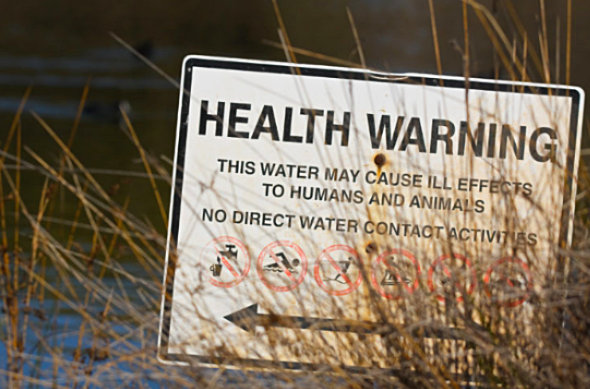
Photo: Auburn University Food Systems Institute
Yesterday the EPA released its long-awaited plan to address Per- and polyfluoroalkyl substances (PFAS) a family of chemicals that are linked to cancer and other illnesses, and that are found widely across the U.S. in drinking water and soil. But the “action” plan, which promises to begin a process by the end of the year to set limits on the release of these chemicals, contains no immediate plan to address this terrible problem that has plagued communities across the nation. ODP has reported several times on the extent of the problem — it is particularly acute in communities with military bases and 3M plants, which both used the chemicals extensively. According to The Hill, EPA’s own data show 1.3 percent of all public water systems had detections of PFAS at or above the nation’s health advisory level.
-
PFASs are found in numerous commercial household items such as food packaging, cleaners, water-repellent fabrics, Teflon-coated cookware and cleaning products, plus industrial products like firefighting foams.
-
It has leached into groundwater sources that reach millions of Americans via their drinking water.
- The chemicals are extremely toxic — they have been linked to reproductive and developmental, liver and kidney, and immunological effects, and they can also contribute to low infant birth weights, thyroid problems and some cancers.
Democratic Members of Congress and environmental groups immediately called the plan too little, too late. Scott Faber, senior vice president of the Environmental Working Group, argued that the plan would actually permit even greater harm, “This so-called plan is actually a recipe for more PFAS contamination, not less,” Faber said in a press statement. “It’s shameful that the EPA has taken two decades to produce a plan that allows increased exposure to compounds whose makers have used the American people as guinea pigs and, with the EPA’s complicity, covered it up.” EPA officials steadfastly maintained that the agency is committed to putting a regulation in place.
Why This Matters: Last year the Centers for Disease Control and Prevention urged EPA to act after it concluded that the chemicals may endanger human health at far lower levels than the EPA’s current non-binding limit. The time for study is long passed. Since EPA has been so slow to act, many states have issued regulations of their own limiting PFAS emissions, even in the face of industry objections to the cost. It is high time for the EPA to take bold action. There is no excuse for further delay — EPA could begin the rulemaking process immediately. Clean water and a safe environment should be something that all Americans can count on.
To Go Deeper: Read the study here and judge for yourself whether the agency is acting with sufficient sense of urgency. Read here the Statement of Senator Tom Carper, ranking member on the Senate Environment Committee, and the Environmental Working Group.
February 15, 2019 » clean water, Environmental Working Group, EPA, PFAS, toxic, water

